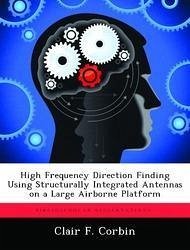Estimating the angle of arrival (AOA) of a high frequency (HF) signal, 2- 2 MHz, is challenging, especially if the antenna array is installed on a platform with dimensions on the order of one wavelength. Accurate AOA estimates are necessary for search and rescue operations and geolocating RF emitters of interest. This research examines the performance of a direction finding (DF) system using structurally ntegrated (SI) antennas installed on an airborne platform which allows the aircraft structure to become the receiving element. Two simulated DF systems are analyzed at 4 and 11 MHz. The relationship between the number of SI antennas used and the AOA accuracy is examined by simulating systems using 4, 8, and 16 antennas. Simulations are also performed using the SI array to synthesize the pattern of a 3-loop cube, or vector, antenna. The maximum likelihood algorithm is used to produce AOA estimates. An array of SI antennas, with a dedicated receiver channel for each antenna, produce more accurate AOA estimates at 11 MHz than at 4 MHz. The accuracy improves when more antennas are included, regardless of frequency. Synthesizing a pattern to perform AOA estimation is an unnecessary step resulting in a suboptimal array for HFDF purposes.
Bitte wählen Sie Ihr Anliegen aus.
Rechnungen
Retourenschein anfordern
Bestellstatus
Storno









